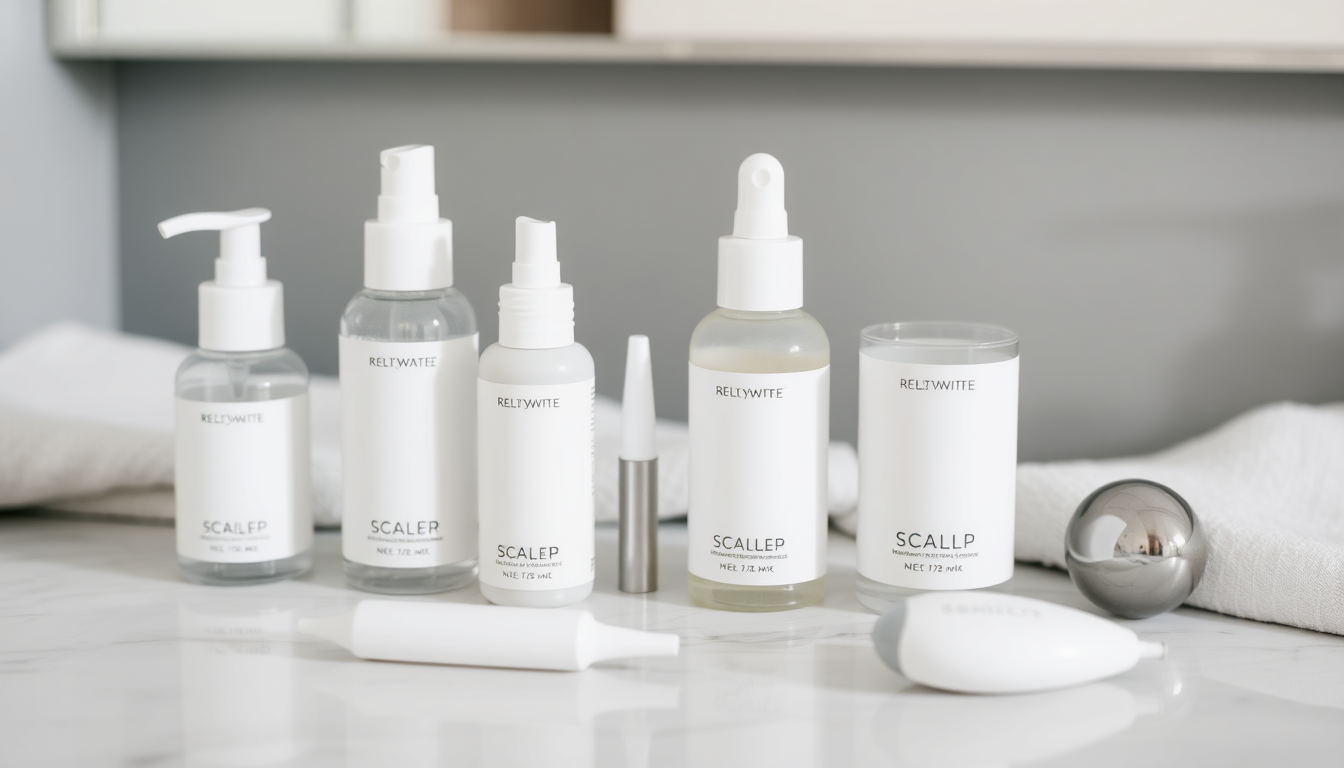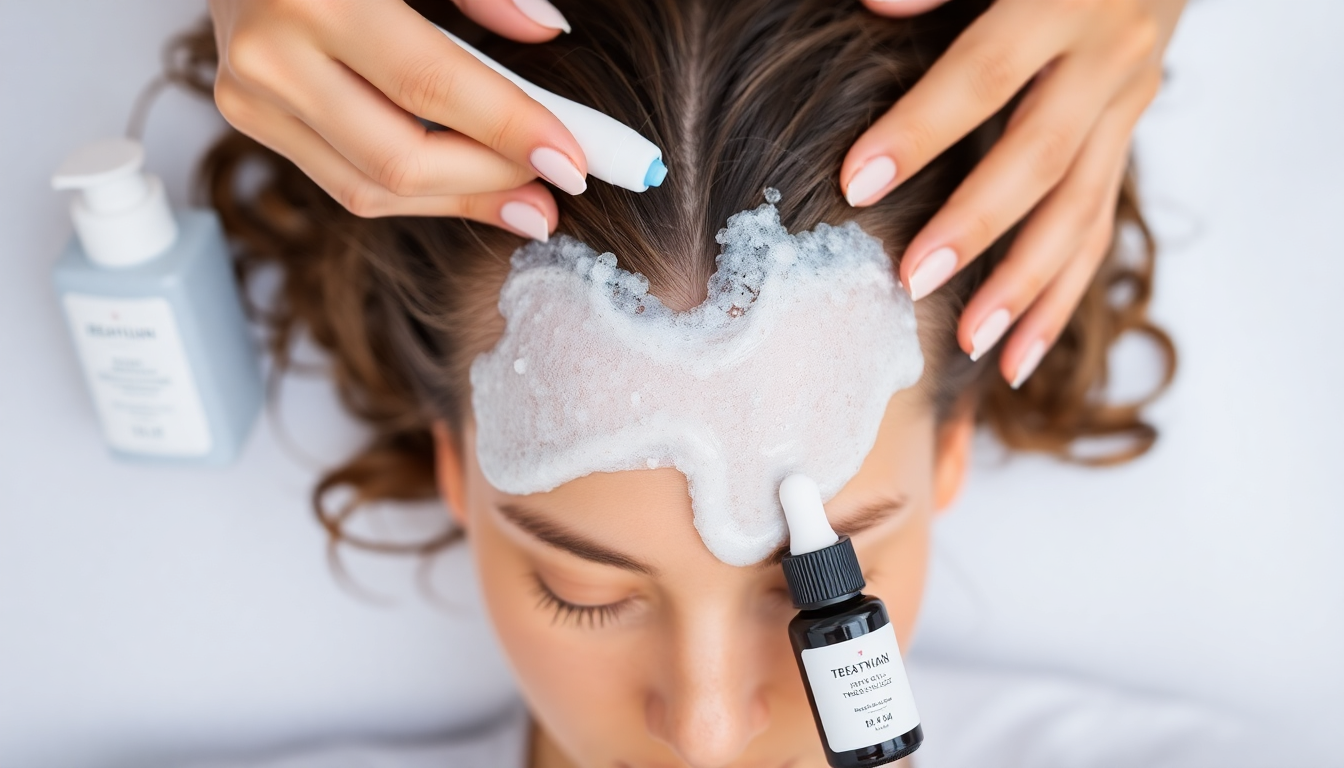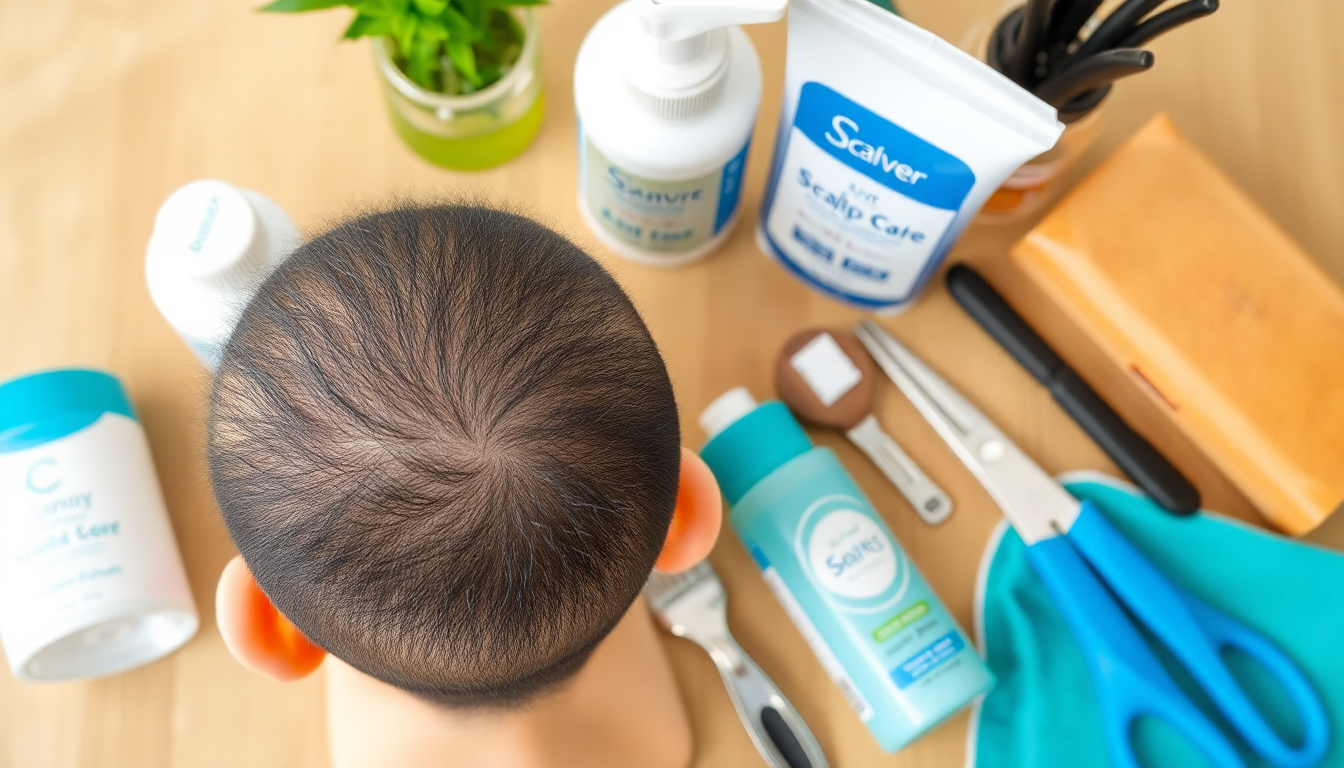Introduction — why a decision tree matters for hair density
Improving hair density while minimizing scalp irritation is a careful balancing act. Peptide serums can support follicle signaling, prebiotic scalp treatments rebalance the microbiome and barrier, and at‑home devices like low‑level laser therapy (LLLT), microneedling and microcurrent can amplify results. But used incorrectly or together without a plan, these tools can increase inflammation or be ineffective.
This detailed guide gives you a practical, stepwise decision tree to pair these modalities into personalized, low‑irritant routines. I’ll explain the science basics, offer clear pairing rules, provide sample protocols for common scalp types, and include troubleshooting, timeline expectations and a shopping checklist so you can safely implement a regimen that fits your goals.

How to use this article and the decision tree
- Read the initial screening and pathway sections to identify which route fits your scalp and goals.
- Use the stepwise pairing rules to select product types and device timing.
- Follow the sample routines and timelines to reduce irritation risk and evaluate progress.
- Return to the troubleshooting and FAQ if you encounter flares or unexpected responses.
Quick screening questions (start here)
- Do you experience burning, stinging or redness after applying routine topical products? (Yes → sensitive pathway)
- Do you have visible flaking, crusting, pustules or a diagnosed inflammatory scalp condition? (Yes → consult a dermatologist before devices or new actives)
- Is thinning diffuse (overall loss), focal/patchy (possible alopecia areata) or patterned (androgenetic)?
- Are you on systemic medications for hair loss or any immunomodulatory drug? (Yes → consult your prescriber)
Decision tree overview (high-level)
- Scalp sensitivity & integrity assessment → choose Sensitive or Tolerant pathway.
- Confirm pattern of hair loss → tailor peptide selection and device aggressiveness.
- Select prebiotic approach (soothing vs clarifying) based on scalp oiliness and buildup.
- Sequence: Cleanse → Prebiotic treatment (rebalancing) → Peptide serum (absorb) → Device (if applicable) with timing rules.
- Monitor for 4–12 weeks before increasing intensity or combining aggressive modalities.
Deep dive: understanding the three pillars
Before pairing, it helps to understand what each pillar contributes and their limitations.
- Peptide serums: Short amino acid chains that can act as signal peptides (encouraging extracellular matrix support), matrikines or copper peptides. They don’t replace hormonal therapies but can support follicle environment and miniaturization pathways when used consistently. Key: start low concentration and patch test.
- Prebiotic scalp treatments: These aim to support beneficial microbes and strengthen barrier function. Ingredients to look for include inulin, fructooligosaccharides, beta‑glucans, panthenol and ceramide‑like lipids. Prebiotics reduce reactive flares and help tolerate stronger actives later.
- At‑home devices: LLLT (stimulates cellular activity via light), microneedling (creates microchannels to enhance delivery and mechanical stimulation), and microcurrent (subtle electrical stimulation to support circulation). Devices have dose and timing considerations that affect compatibility with topicals.
The pairing rules — practical compatibility principles
- Rule 1: Prioritize barrier & microbiome first. Use prebiotic, low‑irritant care for 2–6 weeks before introducing stronger peptides or devices if your scalp is reactive.
- Rule 2: Sequence for safety. Cleanse → prebiotic application → allow absorption → apply peptide serum → device, unless device specifically instructs otherwise (e.g., microneedling often requires a clean, serum‑free or sterile post‑needling product).
- Rule 3: Don’t double up inflammation triggers. Avoid combining microneedling and chemical exfoliants within a 7–14 day window of one another.
- Rule 4: Start low and slow with device intensity and session frequency; increase only after consistent tolerance over 4–8 weeks.
- Rule 5: Patch test all new products 48–72 hours before full‑scalp use; for microneedling, test with the shortest needle first (0.25–0.5 mm) to check recovery.
Pathway A — Sensitive or reactive scalp (step‑by‑step)
Goals: reduce irritation, restore barrier, slowly introduce active support.
-
Initial 0–4 weeks: Calming & prebiotic foundation
- Use a gentle, sulfate‑free cleanser (pH balanced) and a prebiotic scalp serum containing inulin or oligosaccharides plus panthenol and beta‑glucans.
- Avoid fragrance, essential oils, high‑alcohol tonics and strong acids.
- Frequency: gentle cleanse 2–3x/week or as needed; prebiotic product daily.
- Illustration:

-
Weeks 4–8: Introduce low-dose peptides
- Start a single‑peptide serum (eg. acetyl tetrapeptide‑3 or low percent copper peptide). Use 2–3x/week at night and monitor.
- Keep all other variables constant. If tolerated, increase to alternate days over 2–4 weeks.
-
Weeks 8–16: Add conservative device work
- LLLT at low frequency (2–3x/week) is the safest initial device for reactive scalps and can be used together with peptide serums.
- Avoid microneedling until peptides and prebiotics are well tolerated for at least 12 weeks.
- Illustration:

Pathway B — Tolerant or non‑sensitive scalp (step‑by‑step)
Goals: target buildup/oily conditions, faster introduction of actives and devices for accelerated results.
-
Initial 0–2 weeks: Clarify and prep
- Use a clarifying prebiotic tonic (low % BHA or PHA if oily) to remove sebum/buildup while maintaining microbiome support.
- Follow with a lightweight prebiotic serum with niacinamide (2–4%) and panthenol to support barrier and reduce oiliness.
-
Weeks 2–6: Introduce peptides and moderate devices
- Start a peptide blend containing signal peptides and optionally copper peptides, using daily in the AM or PM depending on formulation.
- LLLT 3–5x/week is appropriate. Microneedling (0.5–1.0 mm) may be introduced every 4–6 weeks if no adverse effects appear; microcurrent can be used post‑peptide for short sessions initially.
- Illustration:

-
Weeks 6–16: Escalate carefully if needed
- If enhanced penetration is desired and tolerated, microneedling sessions with controlled depth and sterile technique can be combined with a clean, specifically formulated post‑needling peptide or growth factor serum.
- Always wait 24–48 hours post‑needling before returning to stronger exfoliants or acids.
Patterned thinning vs diffuse shedding vs patchy loss — tailoring strategies
- Androgenetic (patterned) thinning: Focus on peptides that support follicular signaling and LLLT. Coordinate with any hormonal or prescription therapies under medical supervision.
- Diffuse shedding / telogen effluvium: Emphasize scalp calm, nutrition, and gentle peptides while avoiding overstimulation with frequent microneedling.
- Patchy/alopecia areata suspicion: Defer to a dermatologist prior to devices or potent topical combinations.
Compatibility matrix (simple rules-of-thumb)
- Peptides + LLLT: Generally compatible; LLLT can enhance cellular activity without increasing topical irritation risk.
- Peptides + microneedling: Effective for delivery but increases inflammation risk; use sterile technique and conservative needle depth, and select post‑needling formulations accordingly.
- Prebiotics + peptides: Highly compatible; prebiotics improve barrier and tolerance to peptides.
- Acids (exfoliants) + microneedling: Avoid within a 7–14 day window to reduce irritation and infection risk.
Sample 12‑week protocols (detailed)
Below are structured routines you can adapt based on product instructions and device specs. All routines assume no contraindicating medical conditions.
Protocol: Sensitive scalp, early thinning (12 weeks)
- Weeks 0–4: Gentle sulfate‑free shampoo 2x/week; prebiotic scalp serum daily AM; avoid other actives.
- Weeks 4–8: Add low‑dose peptide serum 3x/week PM; continue prebiotic AM; LLLT twice weekly (short sessions).
- Weeks 8–12: If tolerated, increase peptide to alternate nights; LLLT 3x/week; monitor for irritation.
Protocol: Oily scalp with diffuse thinning (12 weeks)
- Weeks 0–2: Clarifying prebiotic tonic (low % BHA) 2x/week; prebiotic serum daily.
- Weeks 2–6: Start peptide blend daily; LLLT 3–4x/week; microcurrent 1x/week.
- Weeks 6–12: Microneedling (0.5–1 mm) every 4–6 weeks only if no adverse effects; continue peptides and LLLT consistently.
Testing, monitoring and objective measures
- Take baseline photos in standardized lighting and angles; repeat every 4–8 weeks to objectively track density changes.
- Keep a symptom diary noting stinging, flaking, shedding and any device reactions.
- Measure tolerance: scalp comfort, erythema scale (none, mild, moderate, severe) and hair shedding counts if desired.
Troubleshooting & red flags
- Immediate discontinuation and consult a professional if you experience severe burning, blistering, pustules or signs of infection.
- If shedding increases transiently after microneedling or starting a new active, observe for 4–8 weeks; persistent worsening warrants professional review.
- Allergic reactions (itchy red rash beyond application area) require stopping all products and seeking care.
Product selection checklist — what to look for
- Ingredient transparency (listed peptide names and concentrations where possible).
- Fragrance‑free, alcohol‑reduced, preservative systems suited to sensitive skin.
- Clear device specs: wavelength(s) for LLLT, needle length for rollers, current settings for microcurrent devices.
- Clinical or consumer evidence, return policies and clear usage instructions.
Common myths and clarifications
- Myth: "More device time = faster regrowth." Fact: Overuse can increase inflammation and slow progress. Follow recommended dosing.
- Myth: "All peptides are interchangeable." Fact: Peptides have different mechanisms (signal peptides, copper peptides, matrikines) and different irritation potentials.
- Myth: "If a product is natural it can’t irritate." Fact: Natural ingredients (essential oils, plant extracts) can be potent sensitizers and should be avoided on reactive scalps.
Advanced pairing examples for experienced users
- Experienced users with tolerant scalps may use microneedling (0.75–1.0 mm) every 4–6 weeks and apply sterile peptide formulations post‑needling designed for transdermal delivery. Keep sessions spaced and monitor erythema and shedding.
- Combine nightly peptide rotation (signal peptide one night, copper peptide another) to reduce long‑term exposure to any single ingredient while maintaining consistent signaling support.
Realistic timelines and expectations
Most users need 3–6 months of consistent use to evaluate density improvement from peptides and LLLT, and 6–12 months for noticeable cosmetic gains. Microneedling can accelerate visible changes for some but requires careful technique and longer follow‑up to confirm durability of results.
Where to find curated, low‑irritant options
When you want curated products formulated for the decision paths above, look for brands that publish ingredient lists and usage guidance. For example, Eelhoe offers targeted options that align with the pathways described here — their dedicated prebiotic scalp treatment and Eelhoe peptide scalp serum are formulated to pair with conservative at‑home device use and include clear ingredient transparency. Browse the Eelhoe product range for options that match your pathway.

FAQ — quick answers
- Q: Can I use LLLT the same day I apply peptide serum? A: Yes, LLLT is typically compatible with topical peptides and can be used after application if the device manufacturer permits.
- Q: How soon can I microneedle after starting a peptide serum? A: Preferably after 8–12 weeks of tolerance to the peptide, and start with short needles and sterile technique.
- Q: Are copper peptides okay with acids? A: Avoid pairing high acid exposures close to copper peptide application—space them 24–48 hours apart to reduce instability and irritation.
Final checklist before you begin
- Patch test all products 48–72 hours before full use.
- Photograph baseline and plan follow‑up photos every 4–8 weeks.
- Start with prebiotic foundation for at least 2–6 weeks if you have a reactive scalp.
- Introduce one new variable at a time (a peptide, a device, or a new exfoliant) and wait 4–8 weeks to evaluate.
Conclusion — take a structured, patient approach
Pairing peptide serums, prebiotic scalp treatments and at‑home devices can be highly effective for improving hair density when done with a structured decision tree that prioritizes scalp health and minimizes irritation. Begin by assessing sensitivity, choose a pathway, follow the sequencing and monitoring rules, and adjust based on objective results and symptom tracking.
If you prefer curated, low‑irritant formulations that align with these pathways, explore Eelhoe’s targeted options such as their prebiotic scalp treatment and peptide scalp serum. These products are designed with ingredient transparency to help you pair topicals safely with at‑home devices. Visit Eelhoe to browse, compare and purchase products tailored for personalized, low‑irritant hair density support.

Disclaimer: This article is educational and not medical advice. If you have a diagnosed scalp disorder, are pregnant, breastfeeding or on systemic medications, consult your healthcare provider before starting new topical treatments or at‑home devices. Individual responses vary; start conservatively and consult professionals for persistent issues.




Yorum yazın
Tüm yorumlar yayınlanmadan önce incelenir.
Bu site hCaptcha ile korunuyor. Ayrıca bu site için hCaptcha Gizlilik Politikası ve Hizmet Şartları geçerlidir.